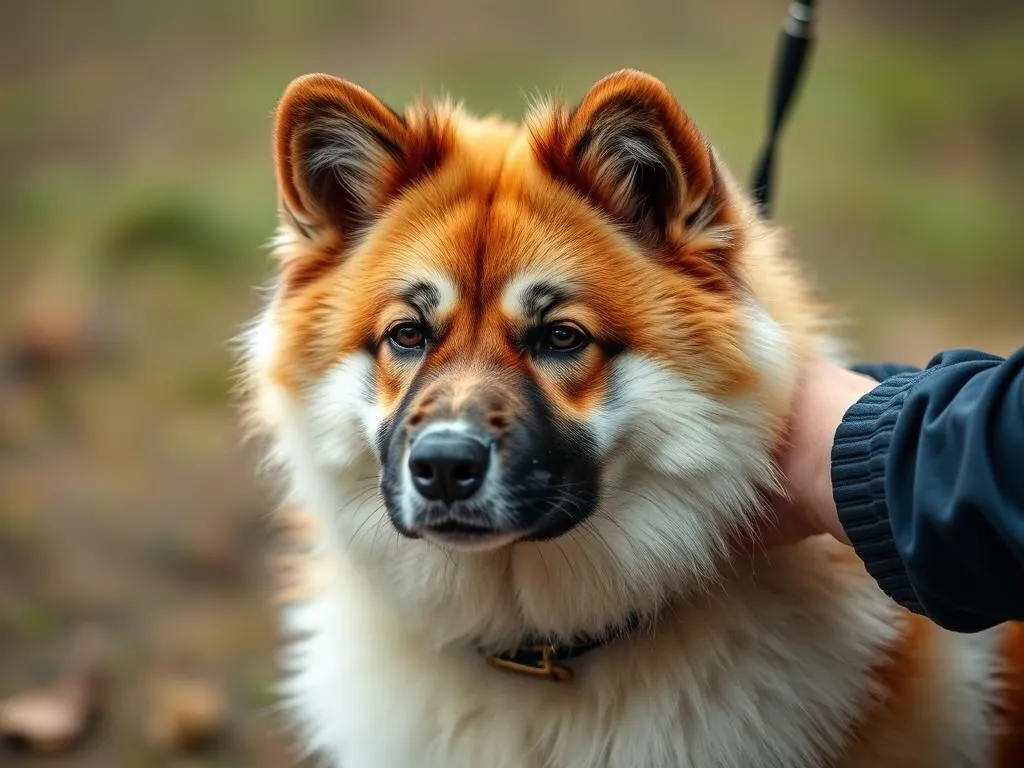
Grooming is a vital part of dog health care that goes beyond mere aesthetics. It plays a crucial role in maintaining your dog’s overall health, especially for breeds like the Akita. Known for their strength and loyalty, Akitas boast a thick double coat that requires specific grooming techniques to keep them healthy and looking their best. In this guide, we will delve into the unique grooming needs of the Akita breed, ensuring that you have the knowledge to provide optimal care for your furry friend.
Understanding the Akita Breed
Characteristics of Akitas
The Akita is a large breed, typically weighing between 70 to 130 pounds and standing about 24 to 28 inches tall. They possess a strong, muscular build that exudes power and dignity. Akitas have a distinctive double coat, consisting of a soft, insulating undercoat and a harsher outer coat. This coat comes in various colors, including white, brindle, and various shades of brown. Their erect ears and bushy tails add to their unique appearance.
In terms of temperament, Akitas are known for their loyalty and protective nature. They are confident, courageous, and often form strong bonds with their families, making them excellent companions. However, they can also be aloof with strangers, which is a trait to consider if you plan to socialize your Akita with others.
Common Health Issues in Akitas
Like many purebred dogs, Akitas can be prone to certain health issues, including hip dysplasia and autoimmune diseases. Regular grooming serves as an opportunity to check for any abnormalities in your Akita’s skin or coat, which can be early indicators of health problems. Additionally, routine grooming helps maintain a healthy coat, reducing the risk of skin infections and irritations.
The Importance of Grooming for Akitas
Benefits of Regular Grooming
Regular grooming offers numerous benefits for your Akita. First and foremost, it plays a vital role in maintaining coat health and shine. The grooming process helps distribute natural oils throughout the fur, keeping it healthy and vibrant. Furthermore, consistent grooming prevents matting, which can lead to skin issues and discomfort for your dog.
Another significant advantage of grooming is the bond it fosters between you and your Akita. The process can be a comforting routine that enhances trust and affection, turning grooming sessions into quality time spent together.
Grooming’s Role in Overall Health
Grooming is not just about the coat; it also involves inspecting your dog’s skin for lumps, bumps, or irritations that could indicate underlying health issues. Regular ear cleaning is essential, as Akitas can be prone to ear infections. Additionally, maintaining dental hygiene is crucial for overall health, preventing dental disease and ensuring your Akita has a healthy mouth.
Essential Grooming Tools for Akitas
Brushing Tools
To groom an Akita effectively, you’ll need the right tools. Start with a slicker brush, which is excellent for removing loose hair and debris from the topcoat. An undercoat rake is also essential, especially during shedding seasons, as it reaches the dense undercoat that can easily mat. Recommended brands include Hertzco and FURminator, known for their quality and durability.
Bathing Supplies
A high-quality dog shampoo is vital for bathing your Akita, particularly one formulated for sensitive skin. Look for products that are free from harsh chemicals and fragrances. Additionally, having a couple of soft towels and a blow dryer designed for pets can make the bathing process smoother and more enjoyable for your dog.
Nail Care Tools
Trimming your Akita’s nails is a crucial aspect of grooming. Invest in a good set of dog nail clippers or a nail grinder, which can be easier for beginners. Regular nail trimming helps prevent pain and mobility issues associated with overgrown nails.
Ear and Dental Care Supplies
Keeping your Akita’s ears clean is essential to prevent infections. Use a veterinarian-recommended ear cleaning solution and cotton balls to gently wipe the inside of the ears. For dental care, opt for dog toothpaste and a toothbrush designed for canines to keep your Akita’s teeth healthy.
Step-by-Step Guide on How to Groom an Akita
Preparing for Grooming
Before you start grooming, prepare a comfortable and quiet space for your Akita. Ensure that all your grooming tools are within reach. It’s essential to have your dog calm and relaxed; consider engaging in some light play or a short walk beforehand to help them settle.
Brushing the Coat
When brushing your Akita, use the slicker brush first to remove any loose hairs from the topcoat. Follow this with the undercoat rake to tackle the dense undercoat, especially during shedding seasons. Aim to brush your Akita at least once a week, increasing to several times a week during shedding periods. Each session should last about 15 to 30 minutes, depending on your dog’s coat condition.
Bathing Your Akita
Bathing an Akita is typically recommended every 6 to 8 weeks unless they become particularly dirty. Begin by wetting your dog thoroughly, then apply shampoo, massaging it into their coat. Rinse thoroughly to ensure no shampoo residue remains, as this can irritate the skin. After the bath, gently towel dry your Akita, then use a pet blow dryer on a low setting to help dry their thick coat.
Nail Trimming
To trim your Akita’s nails, start by holding their paw firmly but gently. Identify the quick (the pink area inside the nail) and avoid cutting into it, as this can cause pain and bleeding. Aim to trim just the tip of the nail. If you’re unsure, clip a small amount and observe your dog’s reaction. Regular nail trimming should be done every 4 to 6 weeks.
Cleaning Ears and Teeth
Cleaning your Akita’s ears can be done during grooming sessions. Use the ear cleaning solution and a cotton ball, gently wiping the inner ear without pushing deep into the ear canal. For dental care, aim to brush your Akita’s teeth at least two to three times a week. Use dog-specific toothpaste and a toothbrush, and be gentle to make the experience positive for your dog.
Common Grooming Mistakes to Avoid
Overbathing
One common mistake is overbathing, which can strip your Akita’s coat of essential oils, leading to dry skin and irritation. Stick to the recommended bathing schedule to maintain a healthy coat.
Ignoring the Undercoat
Neglecting the undercoat during grooming can lead to matting and discomfort. Use an undercoat rake regularly to ensure the thick fur is well-maintained.
Improper Nail Care
Failing to trim your Akita’s nails regularly can result in pain and mobility issues. Keep a consistent schedule to ensure your dog remains comfortable and healthy.
Grooming Schedule for Akitas
Daily, Weekly, and Monthly Routines
Your Akita’s grooming routine should include daily checks for any unusual signs, weekly brushing sessions, and monthly baths. Nail trimming can be done every 4 to 6 weeks, and ear cleaning should ideally occur bi-weekly.
Seasonal Considerations
Akitas tend to shed heavily during the spring and fall. During these seasons, increase the frequency of brushing sessions to manage shedding effectively. Pay attention to the climate; in hot weather, your Akita may require more frequent baths to keep their coat clean and healthy.
Professional Grooming Options
When to Seek Professional Help
If you find that grooming your Akita is challenging or if your dog is particularly anxious during grooming sessions, it may be time to seek professional help. A groomer can provide services tailored to your dog’s needs, ensuring they receive the care they require.
Choosing a Professional Groomer
When selecting a professional groomer, look for someone with experience handling Akitas. Ask about their grooming techniques, tools used, and how they handle anxious dogs. A good groomer will also be able to spot potential health issues during grooming.
Conclusion
Regular grooming is essential for maintaining a healthy and happy Akita. Establishing a routine not only enhances your dog’s appearance but also contributes to their overall well-being. By following the guidelines provided in this article, you can ensure your Akita receives the care they need to thrive. With patience and consistency, grooming can become an enjoyable bonding experience for both you and your furry companion.









